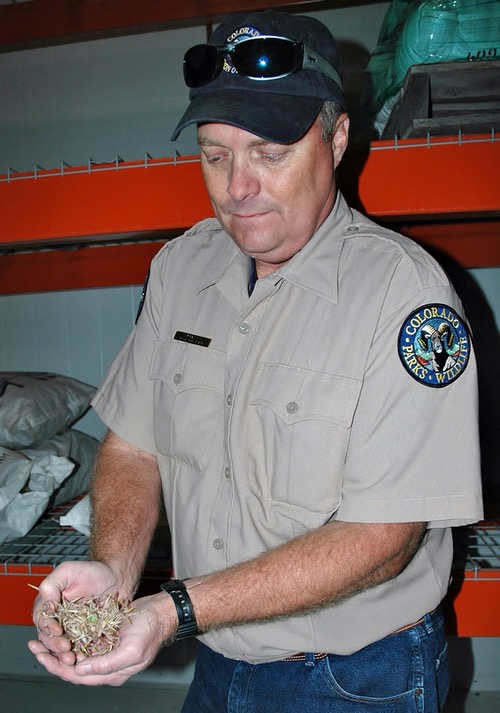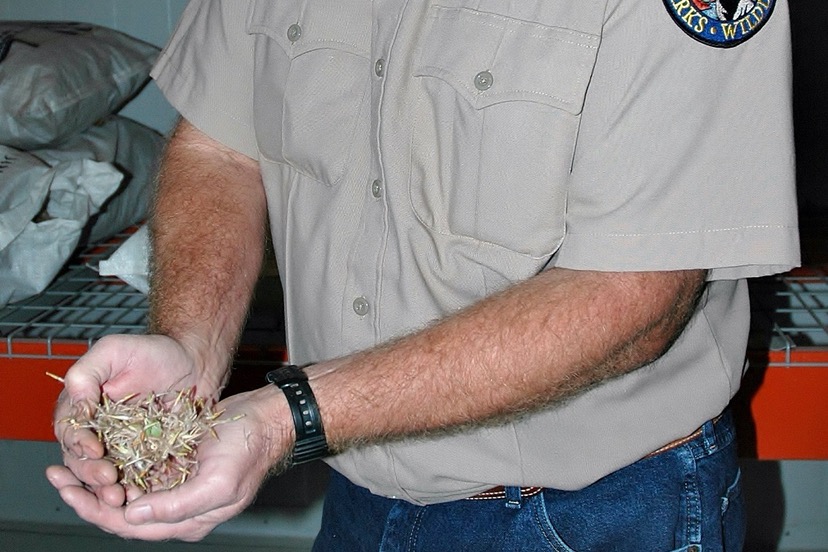When wildfires burn too hot, the soil can become hydrophobic, meaning water can’t get into the soil and help plant life start to take root and prevent erosion. It causes the kinds of flooding Coloradans have become accustomed to seeing in the years following wildfires.
CPW Senior Aquatic Biologist Jeff Spohn said that although big game animals fared well, the South Platte watershed saw detrimental effects and fish kills in the area for years after the Hayman Fire.
“It’ll come down to how intense the burn was in a specific drainage and where the moisture hits,” Spohn said. “You get these valleys and watersheds that have burned, and then have a rain or snow event. That moisture filters down to a drainage which is a river system and it brings all of that ash and debris into the system. And that impacts aquatic wildlife.”
Spohn said CPW has had some initial reports of fish loss from the East Troublesome Fire and he predicted “there likely will be other impacts that have already occurred or will in the future that we have yet to document, not only related to this fire but also to the others that occurred in the northwest portion of the state.”
Strategic reseeding in burn areas can mitigate some of the impacts to watersheds in coming years. Use of local seeds, it turns out, can be an important factor in the success of a project.
Located at the Escalante State Wildlife Area west of Delta, CPW’s 9,000-square-foot seed warehouse facility will play a critical role in wildlife habitat conservation far into the future.
The warehouse allows CPW to buy large quantities of seeds when prices are low so they can be stored in the climate-controlled conditions for future use. And using native plants that are suited to Colorado’s landscape and climate is critical for properly restoring areas that have been disturbed by forest fire, resource development, grazing or other activities.
“We’re in the midst of working with the BLM on the Pine Gulch Fire,” said Jim Garner, CPW terrestrial habitat coordinator and head of the agency’s seed warehouse. “The BLM has identified about 22,000 acres of that fire that they want to put seed on. We’ve identified about 1,500 acres where we’d like a wildlife mix that’s heavy on shrubs and forbs that are preferred by big game.”
The seed warehouse is an example of how CPW helps after fires come through by repopulating native plants.
“We look for areas with thick pinyon-juniper cover where the fire burned really hot and re-seed those areas,” Garner said. “Those are the areas most prone to weed infestation.”
Garner said this year’s wildfires were so unprecedented that even the large CPW seed warehouse doesn’t have enough stored seeds as needed to restore all the charred landscape.

“There’s literally not enough seed,” Garner said. “It’s like trying to buy toilet paper in the middle of a pandemic. It’s just not there. The shelves are bare. So my goal is to try to get ahead of that curve. The fires are going to come, but you may have to sit on seed for three to four years, which we can do. We don’t know when fires will happen. I pray 2020 was an exception. But we need to be ready. And the scale we’ve seen this year is just unprecedented. I don’t think you could store enough seed to handle every fire like that.”
So while wildlife will likely be fine, it will be our watersheds and aquatic life that we’ll need to be mindful of in coming years. As the Hayman Fire showed, proactive strategic prescribed burns near watersheds and being strategic about reseeding may be two of the best ways to protect them.
Back outside of Woodland Park, DWM Kroening took me by the U.S. Forest Service’s 16,700-acre Manitou Experimental Forest north of Woodland Park to end our tour. Established in 1936, the Manitou outpost is where researchers study meteorological, ecological and biological questions related to forests.
Kroening pointed to an area where a prescribed burn from a few years back scorched the ponderosa pines, but left the trees standing, while much of the underbrush was burned away, creating what researchers had deemed healthy spacing, allowing for plenty of sunlight to hit the forest floor and support new growth.
With a controlled burn, the soil doesn’t get too hot and create a situation where the soil is hydrophobic. Even better, wildfires tend to stop at areas that have been recently treated with prescribed burns because there is no canopy to burn through.
In fact, a prescribed burn in the fall of 2001, called the Polhemus burn, altered the behavior of the Hayman Fire. Aerial photos by the Forest Service show a distinct boundary between the Polhemus prescribed burn unit and the Hayman Fire.
Even though a controlled or “prescribed” burn can be incredibly effective, it’s not without its risks. The Lower North Fork Fire that killed three people and destroyed 27 homes in Jefferson County in 2013 was a prescribed burn that got out of hand due to unexpected heavy winds.
Kroening said incidents like the Lower North Fork Fire had likely lessened the number of prescribed burns in recent years. Because of this, Kroening said CPW has tended to do habitat mitigation work like cutting out old trees and using special tools like large hydro axes, which resemble a farmer’s combine, where appropriate to thin out old growth and improve habitat.
“That’s how I got my start with CPW, working on habitat mitigation in a lot of those South Park area state wildlife areas,” Kroening said. “Everything we do is with wildlife in mind, so even if we’re taking out a lot of debris and old growth, we’re thinking about things like edge habitat, leaving some logs on the landscape for small mammals to use for shelter, and leaving behind a thin enough mulch layer that those grasses and forbs can still grow.”

